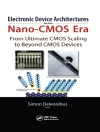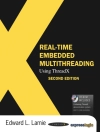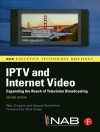A complete road map to creating successful technical
presentations
Planning a technical presentation can be tricky. Does the
audience know your subject area? Will you need to translate
concepts into terms they understand? What sort of visuals should
you use? Will this set of bullets truly convey the information?
What will your slides communicate to future users? Questions like
these and countless others can overwhelm even the most savvy
technical professionals.
This full-color, highly visual work addresses the unique needs
of technical communicators looking to break free of the bulleted
slide paradigm. For those seeking to improve their presentations,
the authors provide guidance on how to plan, organize, develop, and
archive technical presentations. Drawing upon the latest research
in cognitive science as well as years of experience teaching
seasoned technical professionals, the authors cover a myriad of
issues involved in the design of presentations, clearly explaining
how to create slide decks that communicate critical technical
information. Key features include:
* Innovative methods for archiving and documenting work through
slides in the technical workplace
* Guidance on how to tailor presentations to diverse audiences,
technical and nontechnical alike
* A plethora of color slides and visual examples illustrating
various strategies and best practices
* Links to additional resources as well as slide examples to
inspire on-the-job changes in presentation practices
Slide Rules is a first-rate guide for practicing
engineers, scientists, and technical specialists as well as anyone
wishing to develop useful, engaging, and informative technical
presentations in order to become an expert communicator. Find the
authors at techartsconsulting.com or on Facebook at:
Slide Rules TAC
A propos de l’auteur
TRACI NATHANS-KELLY, Ph D, teaches engineering
communication at Cornell University and the University of
Wisconsin-Madison.
CHRISTINE G. NICOMETO, MS, teaches technical
communication in the University of Wisconsin-Madison’s
College of Engineering.
Both authors work with practicing engineers from such
organizations as 3M, Federal Express, GE Healthcare Systems,
General Motors, Google, Harley-Davidson, IBM, John Deere, Kraft,
Lockheed Martin, Micron Technology, NASA, Qualcomm, Rockwell
Automation, The Boeing Company, Toyota, U.S. Department of Defense,
and UTC Aerospace.












